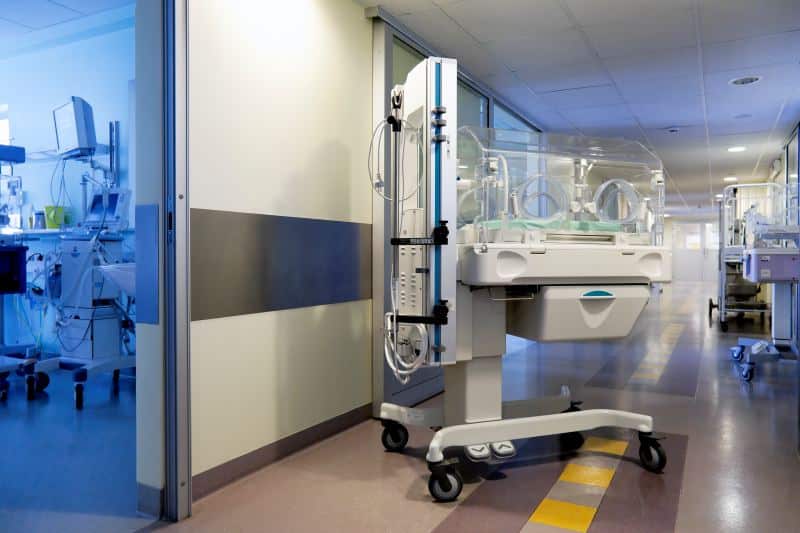
Welcoming a new baby into the world is supposed to be one of life’s purest joys. We picture perfect beginnings, full of hope and happiness. But for some families, this cherished moment tragically becomes the start of a long, incredibly challenging journey. An unexpected birth injury can happen in an instant due to medical error or negligence, and what follows is often not just a temporary problem, but a lifelong path filled with complex medical care.
At Child & Birth Injury Lawyers, our firm understands this journey. Serving clients nationally, we’ve seen firsthand that the immediate aftermath of a birth injury, while harrowing, is truly just the very beginning. It’s the first step in a complex cascade of medical needs that profoundly impacts a child’s entire life and reshapes every aspect of their family’s future. The deep and many-sided impact of a birth injury’s medical complexities is often hard for people to grasp unless they live it every day.
The Immediate Storm: Intensive Care and Uncertainty
The moments right after a birth injury can be chaotic, frightening, and deeply uncertain. Families are often thrust into a world they never imagined, filled with medical terms and difficult decisions.
The first hours and days can be critical. This might involve an emergency C-section, where doctors have to deliver the baby very quickly to prevent more harm. After birth, many babies with injuries need to go straight to the Neonatal Intensive Care Unit, or NICU. This isn’t just a regular nursery; it’s a special hospital ward for very sick or very tiny babies. Stays here can last for days, weeks, or even months.
Inside the NICU, tiny babies might have wires and tubes, making it hard for parents to even hold them. Doctors use advanced imaging like MRIs and CT scans to look closely at the baby’s brain and body, trying to understand what happened and how bad the injury is. There might be life-sustaining medical procedures – machines helping the baby breathe, special feeding tubes, or medications. These initial steps are incredibly hard for parents, filled with worry, fear, and a desperate hope for good news. It’s a time of profound emotional distress as parents live moment-to-moment with their child’s fragile condition.
The Ongoing Battle: A Life of Treatments and Therapies
Once a child leaves the NICU, the medical journey is far from over. It simply shifts. A child with a birth injury will frequently need a comprehensive plan of ongoing treatments and therapies, becoming a regular part of their daily life.
- Physical Therapy (PT): This is crucial for children with motor skill challenges, like those with Cerebral Palsy or Erb’s Palsy. Therapists help improve strength, balance, coordination, and movement. Imagine a child learning to sit, crawl, or walk for the first time, often needing years of dedicated exercises and help.
- Occupational Therapy (OT): This focuses on helping a child with daily living activities. It’s about building skills for things most of us take for granted: eating, dressing, bathing, playing, or even holding a pencil. OT also helps with sensory challenges, where a child might be overly sensitive or not sensitive enough to touch, sounds, or sights.
- Speech Therapy (ST): This isn’t just about talking! Speech therapists help with communication challenges, whether it’s learning to use words, sign language, or special communication devices. They also help with feeding and swallowing difficulties, which can be very serious for babies with certain birth injuries.
- Multiple Surgeries: Many children with birth injuries face the prospect of multiple surgeries throughout their lives. These could be orthopedic surgeries to correct bone deformities, neurological surgeries to address brain-related issues, or even reconstructive surgeries. Each surgery means more hospital stays, recovery time, and potentially more therapy.
- Specialized Medical Equipment: Life with a birth injury often means a constant need for specialized equipment. We’re talking about wheelchairs, adaptive strollers, braces, walkers, standing frames, feeding tubes, communication devices, and even special beds. These items aren’t just one-time purchases; they’re incredibly expensive and often need to be upgraded or replaced as a child grows. The cost and logistics of managing this equipment can be overwhelming.
A Team of Experts: Specialists as Part of Daily Life
What was once just a routine visit to the pediatrician quickly changes. For families dealing with a birth injury, life often transforms into a revolving door of specialist appointments. This isn’t just one or two extra doctors; it’s an entire team of experts, each focused on a different part of the child’s complex needs.
- Neurologists: For brain injuries, to manage conditions like seizures or cerebral palsy.
- Orthopedists: For bone and joint issues, especially related to mobility or limb differences.
- Pediatric Surgeons: If surgeries are needed.
- Rehabilitation Experts/Developmental Pediatricians: To coordinate therapies and track overall development.
- Ophthalmologists: For vision problems.
- Gastroenterologists: For feeding and digestive issues, which are common in children with neurological injuries.
- Pulmonologists: For breathing difficulties.
- Nutritionists: To ensure proper growth and diet, especially if there are feeding challenges.
- Psychologists/Therapists: For the child’s and family’s mental health and emotional well-being.
Managing these appointments, understanding complex treatment plans, navigating insurance, and constantly advocating for their child’s needs effectively becomes a full-time job for parents. They become de facto care coordinators, often learning complex medical jargon and fighting for every service their child needs.
The Hidden Medical Complexities: Beyond the Obvious
Beyond the primary injury and obvious therapies, birth injuries often bring a host of hidden medical complexities that demand constant vigilance.

- Secondary Conditions: A primary birth injury can lead to other serious health problems. For example, a child with severe Cerebral Palsy might develop scoliosis (curvature of the spine), painful muscle spasms, or even sleep apnea. Brain injuries can lead to epilepsy (seizures) or vision impairments. Feeding difficulties can lead to aspiration (food entering the lungs) and recurrent pneumonia.
- Medication Management: Many children require lifelong medications to manage pain, seizures, muscle spasms, or other chronic conditions. This involves careful monitoring for side effects and drug interactions.
- Nutritional Challenges: Some children cannot eat by mouth and require feeding tubes, special diets, or intensive nutritional monitoring to ensure they get enough calories and nutrients to grow.
The sheer volume of medical care, combined with the emotional and financial strain, is immense. It’s a journey that requires incredible strength, resilience, and often, substantial financial resources to ensure the child receives the best possible care for a fulfilling life.
Seeking Justice to Secure Care
At Child & Birth Injury Lawyers, we understand that these lifelong medical complexities directly translate into enormous financial costs. When medical negligence leads to such profound challenges, our firm is here to help. With our national experience, we work to secure the comprehensive compensation families need to cover these ongoing medical needs, therapies, equipment, and specialist care for their child’s entire life. We believe every child deserves the best possible future, and we fight to make sure preventable injuries do not limit their access to crucial medical support.













